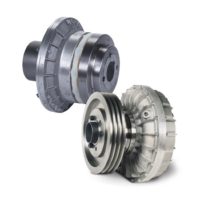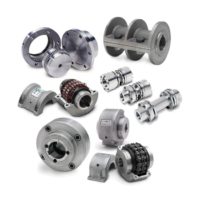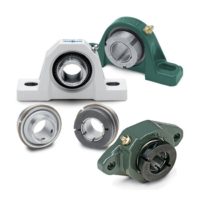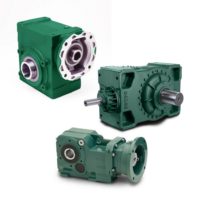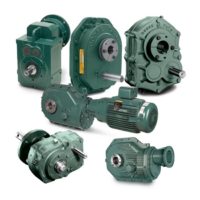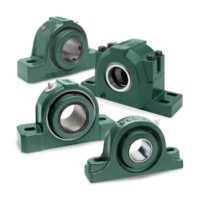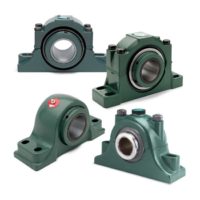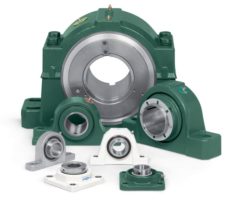
ENGINEERING
B20-35
Plummer Blocks
Sleeve Bearings
SLEEVOIL
Take-Up Frames
Engineering
Part Number Index
Keyword Index
Flywheels
are used on some machines, for example air
compressors, to even out load pulsations. The following
formulas are useful in designing entire flywheels and flywheel
rims. A V-belt sheave may also be used as a flywheel eliminating
the need for a separate flywheel in the system.
Formulas for Entire Flywheel
Kinetic energy of rotation of a flywheel (foot pounds)
=.0001705 N
2
(WR
2
)*.
Torque to uniformly accelerate or decelerate a flywheel
=
where N
2
=最后R.P.M.and N
1
= initial R.P.M.
Velocity at outside diameter (feet per minute) = 0.2618 ND.
W = weight (pounds).
R = radius of gyration (feet).
N = speed (R.P.M.)
t = time to change from N
1
to N
2
(seconds).
F = face of rim (inches).
D = outside diameter of rim (inches).
d = inside diameter of rim (inches).
K = weight per cubic inch of material (pounds).
*WR
2
= flywheel effect (pounds X feet
2
). See table to the right for
WR
2
of rims. Ordinarily the WR
2
of the rim only is considered.
In unusual instances the relatively small WR
2
values of the hub
Flywheel Formulas
and arms or web can be added directly to the WR
2
of the rim if
desired. To find the WR
2
of a hub or web use the WR
2
formula
for rims, substituting the hub or web outside diameter, inside
diameter, and width for D, d and F respectively. When arms are
used instead of a web an approximate WR
2
value of the arms is
the total weight of the arms in pounds times the square of the
radius in feet from the shaft center line to the mid point of the
arms between hub and rim.
.03908 (N
2
- N
1
)
(WR
2
), * pound-inches
t
Table 31: Formulas for Flywheel Rims
Property
Cast Iron Rim
(Based on.26 Ibs.
per cu. in.)
Steel
Rim
(Based on .283 lbs.
per cu. in.)
Rim of any
material
weighing
K pounds per
立方英寸
Volume
(Cubic
Inches)
.7854F(D
2
-d
2
)
.7854F(D
2
-d
2
)
.7854F(D
2
-d
2
)
W
Weight
(Pounds)
.2042F(D
2
-d
2
)
.2223F(D
2
-d
2
)
.7854FK(D
2
-d
2
)
R
Radius of
Gyration
(Feet)
.8681 (D
2
-d
2
)
0.8681 (D
2
-d
2
)
.8681 (D
2
-d
2
)
1000
1000
1000
WR
2
Wt X Sq.
of Radius of
Gyration
(Lbs. X Ft.
2
)
.1773F(D
4
-d
4
)
1000
.1929F(D
4
-d
4
)
1000
.6818FK(D
4
-d
4
)
1000
T
▲
Tensile Load
in rim (Lbs.)
.3078FN2(D
3
-d
3
)
1000000
.3350FN2(D
3
-d
3
)
1000000
1,184FKN2(D
3
-d
3
)
1000000
▲
Centrifugal force causes this tensile load at each and every
section of the rim. Hence, on rims split into two or more
sections the fastening at each joint should be designed to
take the full load as calculated from the formula here given.
√
√
√
Centrifugal Force
R = Distance from the axis of rotation to the center of
gravity of the body (feet).
N = Revolutions per minute.
v = Velocity of the center of gravity of the body (feet
per second).
g = Acceleration due to gravity (32.16 commonly).
F =
=
=
.000341 WRN
2
F = Centrifugal force tending to move the body
outward from the axis of rotation (pounds).
W = Weight of body (pounds).
Wv
2
gR
WRN
2
2933






